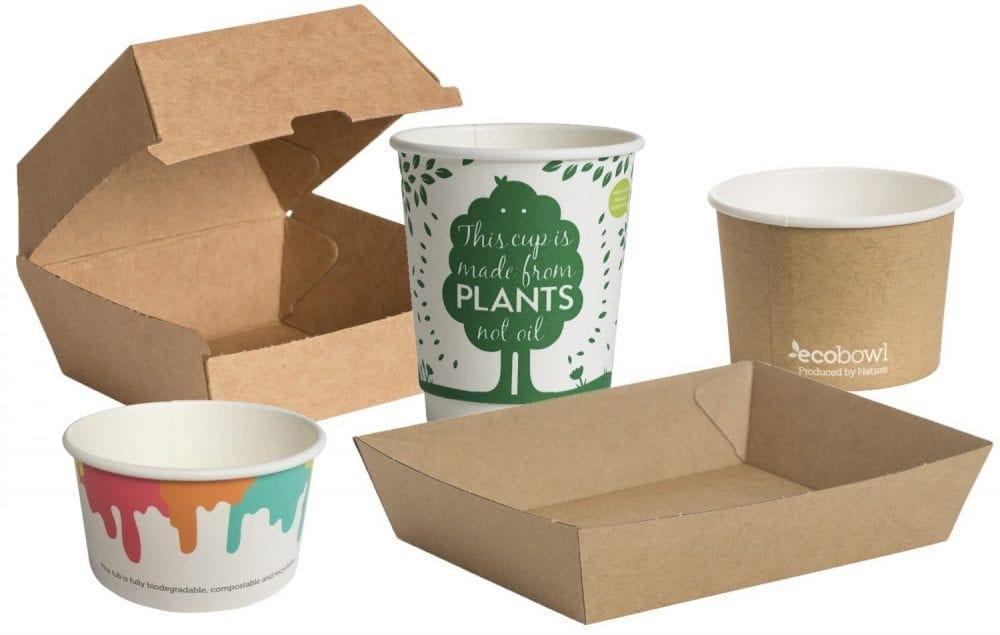Compostable Packaging Market and Sustainability: How It Reduces Environmental Impact

Introduction
As environmental concerns intensify, the demand for sustainable solutions in the packaging industry continues to rise. Compostable packaging has emerged as an effective alternative to conventional plastics, offering the ability to decompose naturally without leaving harmful residues. By integrating biodegradable materials such as paper, bioplastics, and natural fibers, compostable packaging market significantly reduces environmental impact. This article explores how compostable packaging contributes to sustainability and its role in mitigating pollution and waste.
The Environmental Benefits of Compostable Packaging
Compostable packaging provides numerous advantages for the environment by addressing key sustainability issues related to waste management, carbon emissions, and resource consumption.
-
Reduction in Plastic Waste: Traditional plastic packaging can take hundreds of years to decompose, contributing to severe pollution problems. Compostable packaging breaks down within weeks or months under proper conditions, reducing the burden on landfills and oceans.
-
Lower Carbon Footprint: Many compostable materials are sourced from renewable resources, such as cornstarch, sugarcane, or agricultural byproducts, which have a lower carbon footprint compared to petroleum-based plastics.
-
Improved Soil Health: When compostable packaging decomposes in industrial or home composting systems, it enriches the soil with organic matter, enhancing soil fertility and reducing the need for synthetic fertilizers.
-
Decreased Dependence on Fossil Fuels: Unlike traditional plastics, which rely on fossil fuels for production, compostable packaging often utilizes plant-based raw materials, reducing overall carbon emissions and environmental degradation.
-
Reduction in Toxicity: Unlike conventional plastic packaging, which can release harmful chemicals into the environment, compostable packaging breaks down into non-toxic elements, making it safer for wildlife and ecosystems.
Key Materials in Compostable Packaging and Their Sustainability Impact
-
Paper-Based Packaging: Paper packaging, including corrugated cardboard, kraft paper, and molded fiber, is biodegradable, recyclable, and compostable, making it an eco-friendly alternative for e-commerce, food, and retail industries.
-
Bioplastics: Derived from natural sources like corn starch (PLA), microbial fermentation (PHA), and starch-based compounds, bioplastics provide durability while being compostable under industrial conditions.
-
Natural Fiber-Based Packaging: Materials like bagasse, hemp, palm leaf, and bamboo offer sturdy, biodegradable alternatives for food packaging and single-use containers.
Challenges in Implementing Compostable Packaging
While compostable packaging offers significant environmental benefits, some challenges need to be addressed for widespread adoption.
-
Composting Infrastructure Limitations: Many regions lack adequate industrial composting facilities, making it difficult for compostable packaging to break down efficiently.
-
Higher Production Costs: Compared to conventional plastic packaging, compostable alternatives often have higher manufacturing costs, impacting affordability and adoption rates.
-
Consumer Confusion: Misconceptions between biodegradable, recyclable, and compostable materials can lead to improper disposal, reducing the effectiveness of compostable packaging.
-
Performance Concerns: Some compostable materials may have lower durability or shorter shelf life, requiring further innovation to improve their usability.
Future Outlook and Opportunities
Despite these challenges, the compostable packaging market is expected to grow as businesses and governments implement sustainability policies. Key opportunities include:
-
Advancements in Material Science: R&D in biopolymers and fiber-based packaging will enhance the strength, moisture resistance, and cost-efficiency of compostable materials.
-
Expansion of Composting Facilities: Investment in composting infrastructure will ensure proper disposal and processing of compostable packaging.
-
Government Regulations and Incentives: Policies banning single-use plastics and promoting compostable alternatives will drive market growth.
-
Consumer Awareness Campaigns: Educating consumers on proper disposal practices will maximize the environmental benefits of compostable packaging.
Conclusion
Compostable packaging represents a critical step toward sustainable packaging solutions, offering a viable alternative to plastic waste and reducing environmental impact. With continued advancements, regulatory support, and increased consumer awareness, compostable packaging will play an essential role in creating a greener, more sustainable future.
- Art
- Causes
- Crafts
- Dance
- Drinks
- Film
- Fitness
- Food
- Games
- Gardening
- Health
- Home
- Literature
- Music
- Networking
- Other
- Party
- Religion
- Shopping
- Sports
- Theater
- Wellness


